 |
 |
 |
| |
Adipocyte Dysfunction Despite
Reduced Adipose
Inflammation in
Diabetics with HIV
|
| |
| |
http://www.croiwebcasts.org/console/player/44732?mediaType=slideVideo&
CROI 2020
Reported by Jules Levin
Samuel S. Bailin1, Spyros A. Kalams1, Simon Mallal1, Fei Ye2, Run Fan2, Mona Mashayekhi3, Curtis L. Gabriel4, John R. Koethe1, and Celestine Wanjalla1
1Division of Infectious Diseases, 3Division of Endocrinology, and 4Division of Gastroenterology, Vanderbilt University Medical Center, Nashville, Tennessee, USA
2 Vanderbilt University, Department of Biostatistics, Nashville, Tennessee, USA
Program Abstract
Adipose tissue has a central role in the regulation of metabolism. Exposure to early antiretroviral therapy (ART) regimens, including thymidine analogues, was associated with increased adipose tissue inflammation and risk of diabetes in persons with HIV (PWH). Few studies have assessed the relationship of adipose tissue inflammation and insulin resistance in PWH on newer ART regimens.
73 PWH with > 12 months sustained viral suppression, principally on integrase inhibitor-based ART and < 10% with historic thymidine analogue exposure, were classified as insulin sensitive (n = 46; hemoglobin A1c < 5.7% and fasting blood sugar < 100 mg/dL) vs. diabetic (n = 27; on anti-diabetic medications) and underwent subcutaneous abdominal adipose tissue liposuction. Tissue was immediately flash frozen for subsequent total RNA extraction, and mRNA was quantified using the Nanostring nCounter® human inflammation panel containing 250 genes, and a separate panel containing 77 genes modified from the KEGG adipocytokine pathway. mRNA expression was compared by diabetes status adjusting for age, sex, and body mass index (BMI).
78% of study participants were male. The median age was 45 years and 55 years, and median BMI 31 kg/m2 and 34 kg/m2, for non-diabetic and diabetic participants, respectively. Analysis of adipocyte-related genes revealed that diabetic individuals had lower expression of genes involved in the AMPK signaling (FASN, PPARG, PCK2) and fatty acid biosynthesis (FASN, ACSL6) pathways, and increased expression of genes involved in fatty acid degradation (ACOX1, ACSL3) (FDR-adjusted p value < 0.05; Figure 1). Inflammatory gene analysis showed that diabetics had lower expression of genes related to inflammation than non-diabetics, including NF-kappa B signaling and cytokine-cytokine interaction pathways (FDR-adjusted p value < 0.05; Figure 1).
In one of the largest and broadest assessments of adipose tissue gene expression in non-diabetic vs. diabetic PWH on modern ART, we found pronounced differences in adipocyte-related genes, consistent with dysregulation of metabolic pathways in diabetes, but less evidence of increased adipose tissue inflammation in contrast to studies of PWH on older ART. Single-cell studies are planned to investigate whether adaptive immune cells or other mechanisms that may not be captured in whole tissue contribute to adipocyte dysfunction and diabetes.
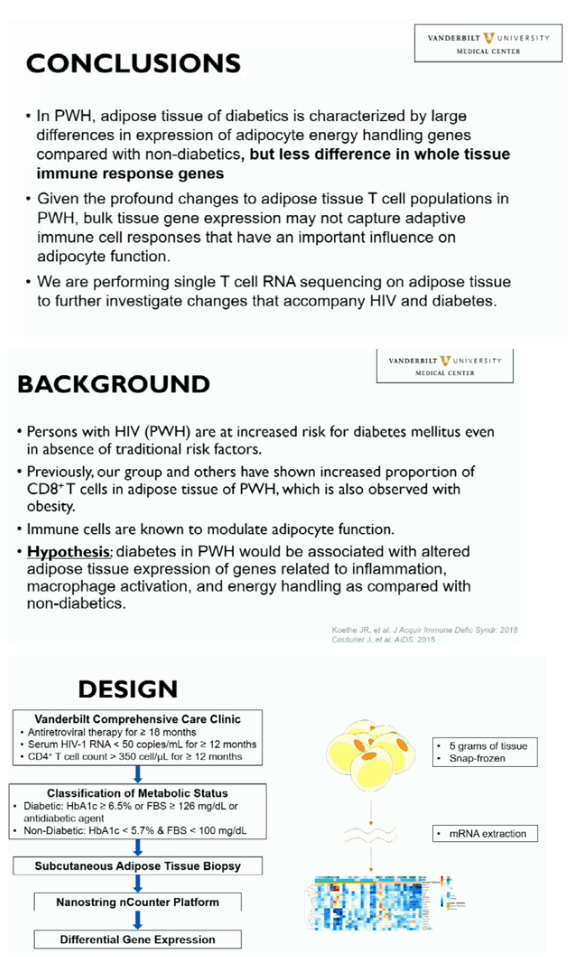
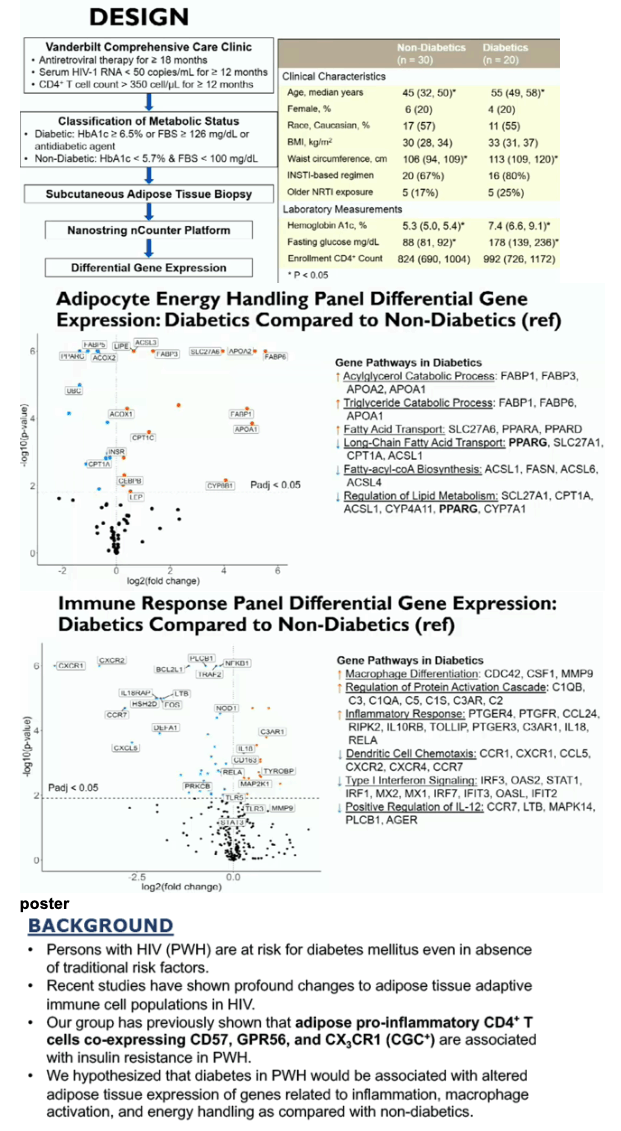
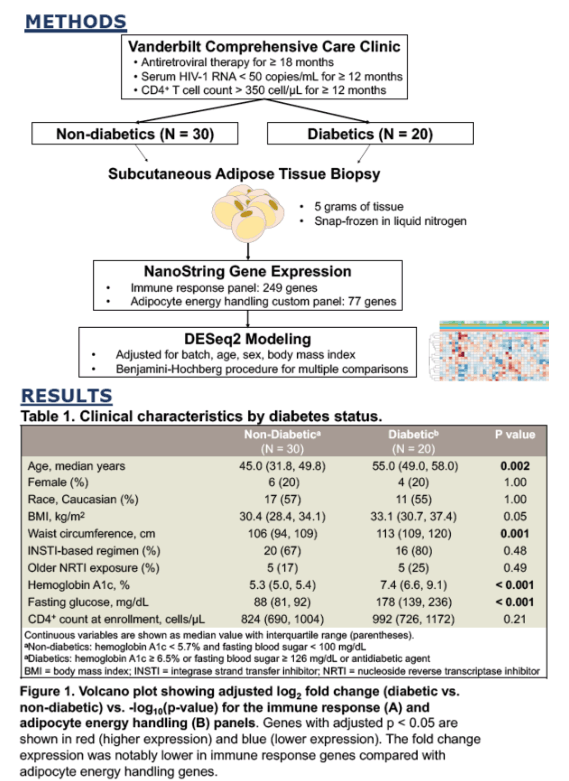
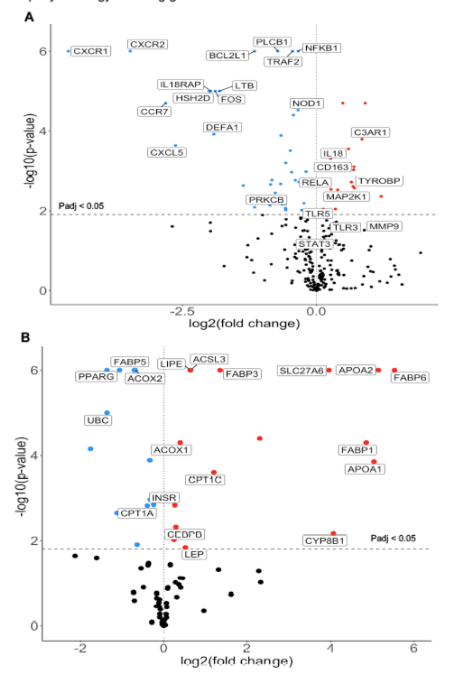
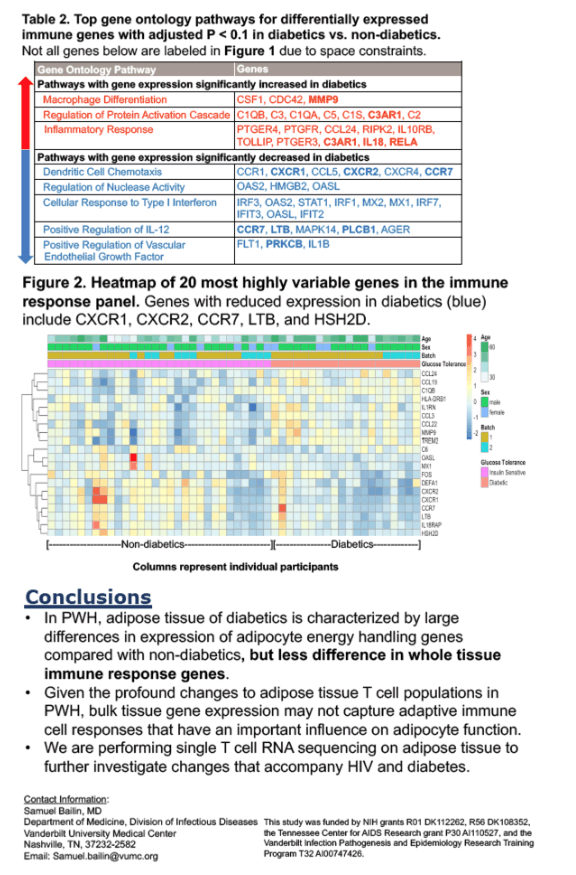
|
| |
|
 |
 |
|
|